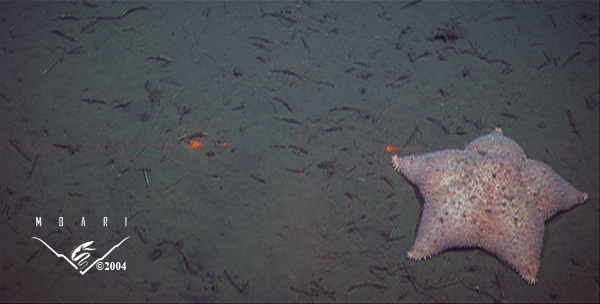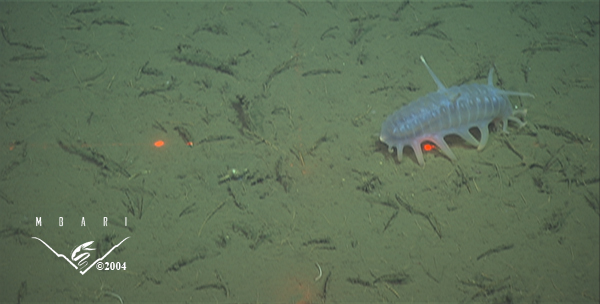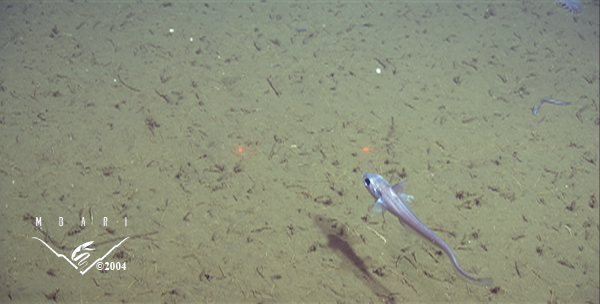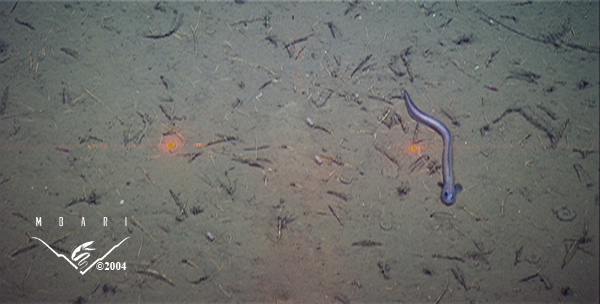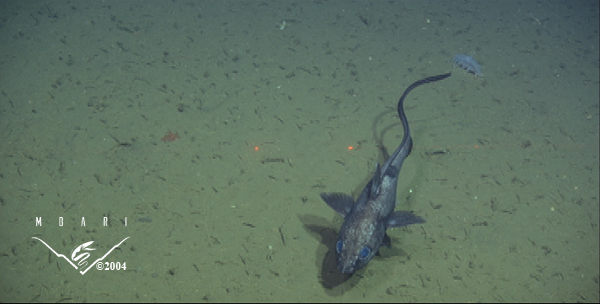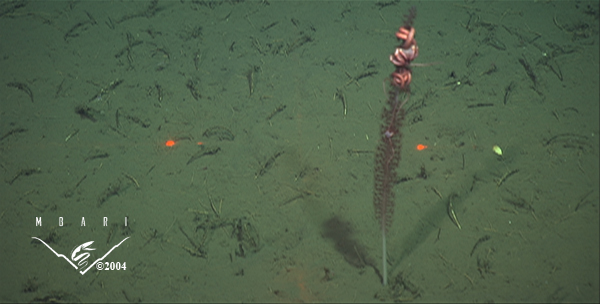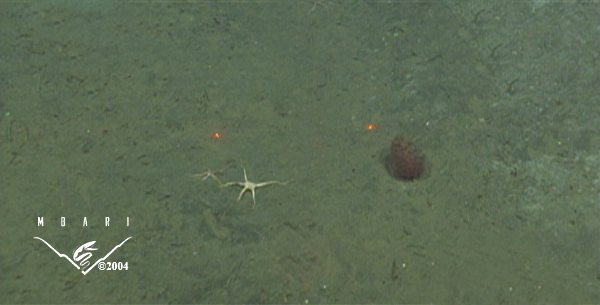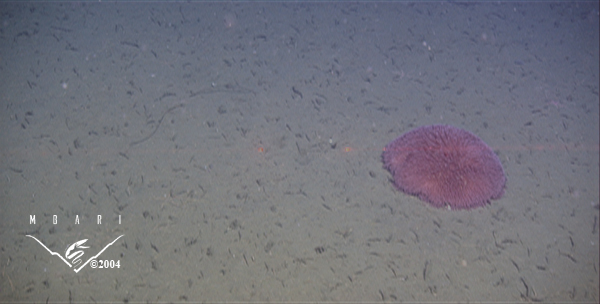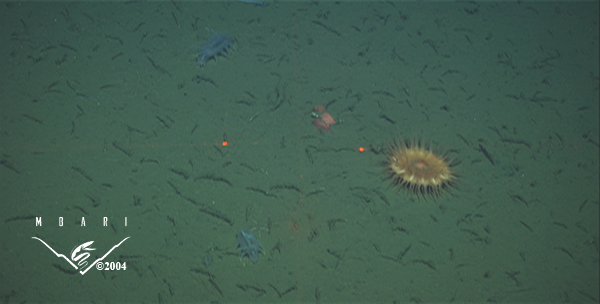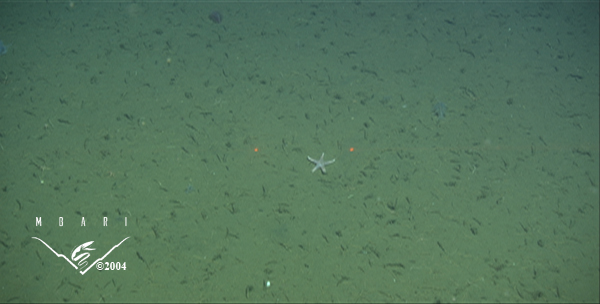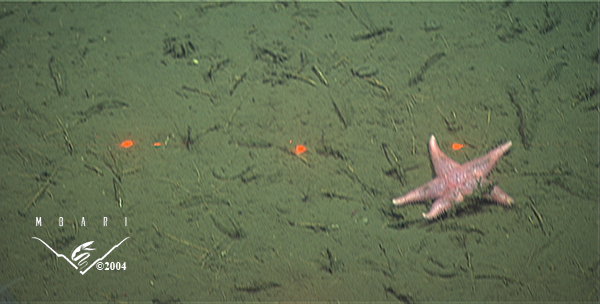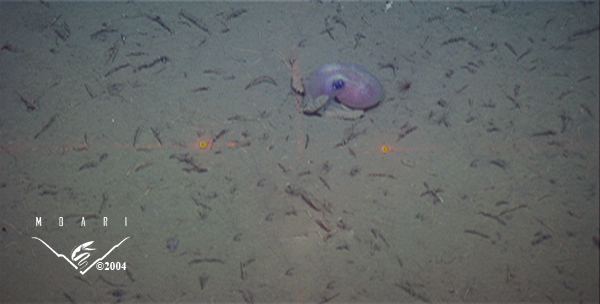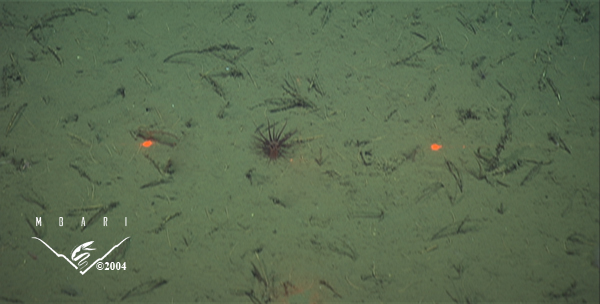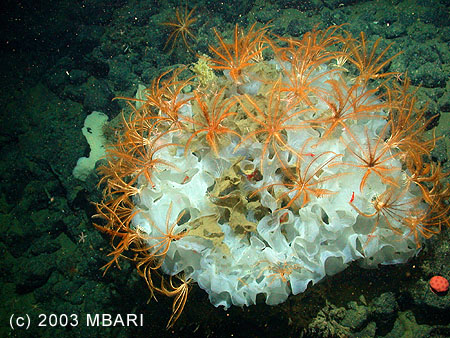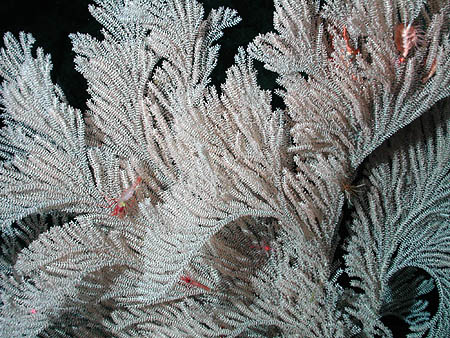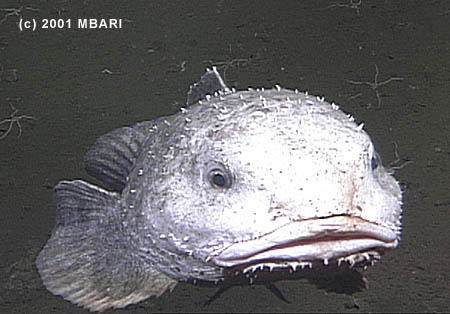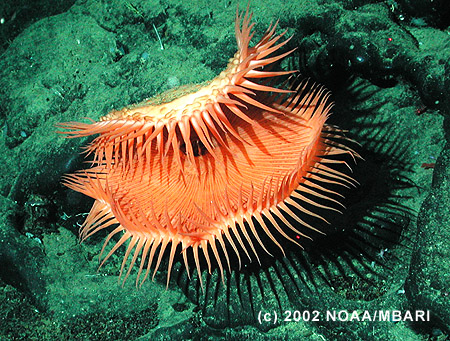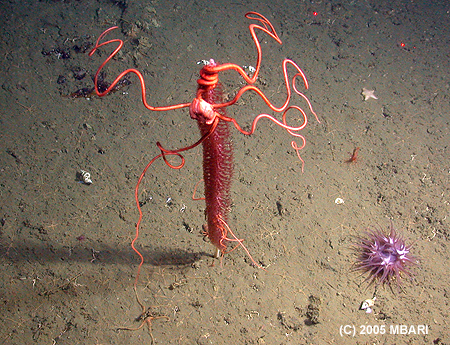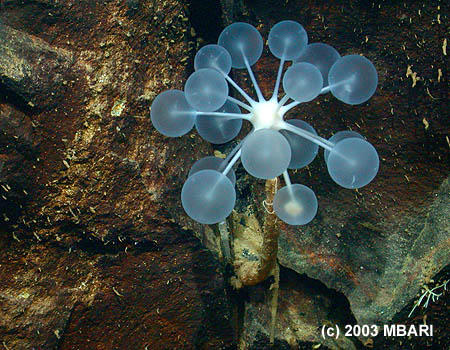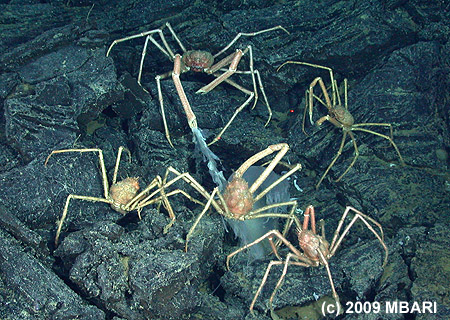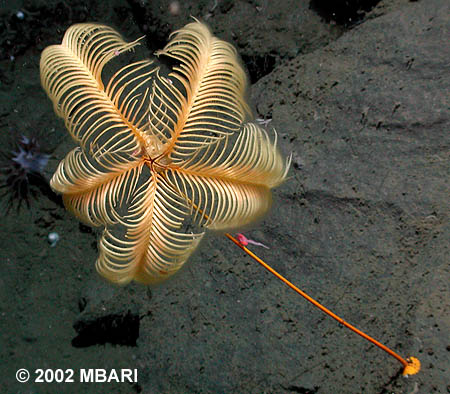 | Monterey Canyon Deep-sea Soft Sediment Megafauna 1500 m |
Pincushion star Pteraster or Hippasteria sp |
Sea cucumber Scotoplanes globosa |
Grenadier Juvenile C. acrolepis |
Snakehead eelpout Lycenchelys sp. |
Pacific grenadier Coryphaenoides acrolepis |
Sea whip and Red brittlestar ?Halipteris californica & Asteronyx loveni |
Sea pen sp. 2 and Red brittlestar Pennatulacea & Asteronyx loveni |
California sea pen Pennatula (phosphorea) californica |
Tumbleweed anemone Liponema brevicornis |
Anemone Actinostolidae |
White seastar Asteroidea |
Pink seastar Asteroidea |
Octopus Graneledone (boreopacifica) pacifica |
Cerianthidae and Anemone sp. 2 |
Sponge and Crinoids.This white deep-sea sponge is about one meter (three feet) across. It was photographed by MBARI''s remotely operated vehicle Tiburon on the crest of Pioneer Seamount, about 100 kilometers (65 miles) southwest of San Francisco and 1,600 meters (one mile) below the ocean surface. Clinging to the sponge are dozens of feathery orange crinoids, which perch above the sea floor, capturing tiny food particles that drift by on deep-ocean currents |
Pink gorgonian coral.This pink gorgonian coral was photographed by ROV Tiburon at a depth of about 1,700 meters (5,600 feet) during an expedition to Davidson Seamount in 2002. Several small pink shrimp are climbing on the coral, perhaps eating small animals or bits of the coral itself |
With a face only another blob sculpin could love, this Psychrolutes phrictus swam up to take a look at the camera on MBARI''s remotely operated vehicle Tiburon. This image was taken while Tiburon was exploring a submarine canyon off the coast of Big Sur, about 2,000 meters (6,600 feet) below the sea surface. Blob sculpin grow to about 60 cm (2 feet) long and are shaped like large, flabby tadpoles. They eat crabs, sea pens, and other small animals that live on the seafloor. MBARI researchers have seen groups of blob sculpin brooding nests of eggs on undersea ridges off the coast of Northern California |
Flytrap anemone.MBARI''s remotely operated vehicle Tiburon photographed this "flytrap anemone" about 1,900 meters (6,200 feet) below the sea surface during a dive on Davidson Seamount. Marine biologists have not been able to determine the exact genus or species of this animal, but they have placed it in the family Hormathiidae. We often see flytrap anemones up to 30 cm (one foot) across growing on exposed rock outcrops on seamounts and deep sea ridges, where currents are relatively strong. Although some scientists have suggested that flytrap anemones eat bits of debris carried on the ocean currents, their body shape suggests that they feed on small animals, such as shrimp, that happen to swim by. Flytrap anemones were recently discovered to release bioluminescent slime when disturbed |
Sea pen and brittle star.Sea pens are relatives of corals and sea anemones. They anchor themselves in seafloor sediment with a fleshy bulb, their feathery plumes extending up into the water column to capture tiny animals and particles that drift past. A brittle star has climbed up this sea pen and is waving its arms in the current to capture these same particles. A second brittle star can be seen clambering up the the lower part of the sea pen. These animals were photographed about 1,650 meters (one mile) below the sea surface in Monterey Canyon. |
Chondrocladia sponge.Although it looks like something out of a Dr. Seuss book, this is a deep-sea sponge in the genus Chondrocladia. A little over 30 centimeters (1 foot) tall, this sponge was photographed by MBARI''s ROV Tiburon about 2,555 meters (8,400 feet) below the ocean surface, in the Gulf of California. Unlike many sponges, which obtain food by filtering microscopic particles from seawater, Chondrocladia sponges capture and digest small shrimp and other crustaceans that stick to the sponge''s translucent globes |
Crab feed.This photo shows several deep-sea spider crabs (Macroregonia macrochira) feeding on a dead jelly that has sunk to the seafloor. The photo was taken 1,554 meters (5,100 feet) below the ocean surface on Axial Seamount, an active underwater volcano and seafloor spreading center about 500 km (300 miles) off the coast of Washington state. These crabs are typically found on seafloor lava flows and other hard-bottom areas. They are particularly common around deep-sea hydrothermal vents, where they are one of the main predators, feeding on tubeworms, clams, and other mollusks |
Sea lily.About 2,400 meters (a mile and a half) below the surface of Monterey Bay, this "sea lily" clings to the wall of Monterey Canyon. Marine biologists call this animal a "stalked crinoid." Crinoids are relatives of sea stars and sea urchins that live by capturing tiny food particles that drift by on deep-ocean currents. The stalk on this crinoid keeps it up above the muddy seafloor, where the currents are slightly stronger. Like many sea stars, this stalked crinoid has five-fold symmetry, and a mouth located at the center of its feathery arms |
from MBARI -http://www.mbari.org/benthic/softsediment1500m.html
